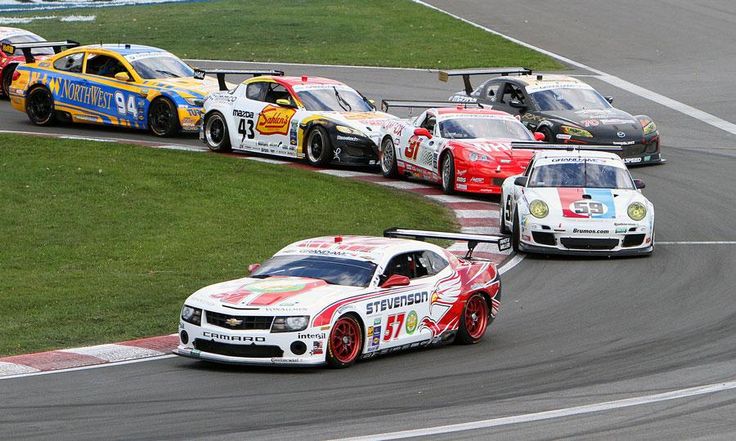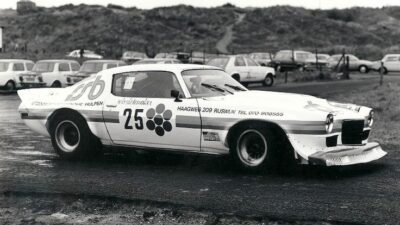Two major types of car racing dominate motorsports today, but they could not be more different in their approach. Formula series like Formula 1 use open-wheel, single-seat cars built purely for speed on shorter races. GT racing uses modified versions of everyday sports cars in longer endurance events.
The main difference between GT racing and Formula series lies in their car designs and race formats – Formula cars are purpose-built single-seaters focused on pure speed, while GT cars are based on production vehicles and emphasize endurance racing with multiple drivers. This creates completely different racing experiences for both drivers and fans.
GT racing offers a more relatable experience since the cars look similar to vehicles people can actually buy and drive. Formula series showcase the absolute peak of racing technology with cars that cost millions of dollars. Both types of racing require different skills, budgets, and strategies to succeed.
Key Takeaways
- GT cars are modified road cars with enclosed wheels while Formula cars are purpose-built open-wheel single-seaters
- GT racing focuses on endurance events lasting hours with multiple drivers, while Formula series emphasize shorter sprint races
- Formula series requires much higher budgets and represents the pinnacle of racing technology compared to the more accessible GT classes
Fundamental Differences Between GT Racing and Formula Series
GT racing uses modified road cars with enclosed wheels and bodies, while Formula series employ purpose-built open-wheel prototypes designed solely for racing. These racing categories differ significantly in vehicle construction, race formats, and technical regulations.
Basic Definitions and Concepts
GT racing centers on Grand Touring cars that maintain their basic road car appearance and characteristics. These vehicles start as production sports cars that manufacturers sell to regular customers.
Racing teams modify these cars for competition while keeping the original body shape and basic design. The cars must look similar to what drivers see on public roads.
Formula series like F1 use completely different vehicles. Teams build these cars from scratch as racing prototypes. No road car version exists because engineers design them only for the track.
The name “Grand Touring” comes from long-distance road trips that wealthy drivers took in luxury sports cars during the early 1900s. This history explains why GT cars keep their road car DNA.
Formula cars prioritize pure speed and aerodynamic performance over any connection to street vehicles. Engineers focus entirely on lap times and racing efficiency.
Vehicle Design and Construction
GT race cars have enclosed wheels and typically seat two people, though only the driver sits inside during races. The passenger seat remains but stays empty for safety reasons.
Key GT Car Features:
- Closed cockpits with roofs
- Fenders covering all four wheels
- Side windows and windshields
- Based on existing road cars
- Two-seat interior layout
Formula cars use completely open designs. The wheels sit outside the main body with no fenders or covers. Drivers sit in exposed cockpits with minimal protection from wind.
Key Formula Car Features:
- Open wheels exposed to airflow
- Single-seat cockpits only
- No roof or side windows
- Purpose-built racing chassis
- Extreme aerodynamic wings
F1 seating positions stay extremely low to the ground due to aerodynamic requirements. This creates handling challenges but maximizes speed.
GT cars offer more flexible driving positions that help drivers control the vehicle better during long races.
Racing Formats and Rules
GT racing features endurance races that can last for hours, testing both drivers and cars over extended periods. Multiple drivers often share the same car during these long events.
Teams must plan pit stops carefully for fuel, tires, and driver changes. Strategy becomes crucial when races run for 6, 12, or even 24 hours straight.
Formula series typically use shorter sprint races lasting 1-2 hours maximum. Single drivers complete entire races without sharing duties with teammates.
GT Racing Format:
- Multiple drivers per car
- Long endurance races
- Emphasis on reliability
- Strategic pit stops
Formula Racing Format:
- One driver per car
- Shorter race distances
- Focus on qualifying speed
- Minimal pit stops
GT racing offers more accessible entry points for teams and drivers compared to Formula series. Costs stay lower because teams start with existing road cars rather than building prototypes from scratch.
The multi-class nature of GT racing allows different car categories to compete simultaneously on the same track. Formula series typically feature identical or very similar vehicles in single classes.
Overview of GT Racing Classes
GT racing features multiple classes that separate cars based on performance and modification levels. These classes range from entry-level GT4 to professional-grade GT3, with each category having specific rules for aerodynamics, power, and weight.
GT1, GT2, GT3, and GT4 Categories
GT racing uses numbered classes to organize cars by speed and performance capabilities. GT1 includes the fastest and most powerful GT cars, while lower numbers indicate different performance tiers.
GT3 represents the current top tier of GT racing. GT3 cars are the fastest globally active GT cars, racing in all corners of the world from professional championships to local series. These cars feature extensive aerodynamic modifications and race-tuned engines.
GT4 serves as the entry-level category. GT4 cars are designed for amateur racers and cost less to purchase and maintain than GT3 vehicles.
GT2 existed as an intermediate class but has largely been replaced by other categories. The class operated between 2005 and 2010 before evolving into different racing formats.
GTE (Grand Touring Endurance) now fills the professional racing space. This class focuses on endurance racing events like Le Mans and uses production-based sports cars with strict performance balancing.
Characteristics of Grand Touring Cars
Grand Touring cars start as production sports cars but receive significant modifications for racing. All vehicles must appear stock, however bodies can include fiberglass, kevlar, or carbon fiber.
Engine Requirements: Race engines must match the car manufacturer. A Ferrari GT car uses Ferrari engines, while Porsche GT cars use Porsche powerplants.
Body Modifications: Teams can relocate engines to front, mid, or rear positions. Aerodynamic elements like wings, splitters, and diffusers get added for downforce.
Safety Features: All GT race cars include roll cages, racing seats, fire suppression systems, and fuel cells. These safety modifications are mandatory across all classes.
Performance Balancing: Race organizers adjust weight and power limits to keep different manufacturers competitive. This system ensures close racing between brands like Porsche, Ferrari, and others.
Notable Manufacturers and Models
Major automotive brands compete across GT racing classes with purpose-built race cars. GT3 features thoroughbred race cars from brands such as Aston Martin, Audi, Bentley, BMW, Chevrolet, Ford, Ferrari, Honda, Lamborghini, Lexus, McLaren, Mercedes-AMG.
Porsche campaigns the 911 GT3 R and GT4 models. These cars dominate many regional championships and appear in international events worldwide.
Ferrari produces the 488 GT3 and 296 GT3 for top-level competition. Ferrari also offers GT4 versions for amateur racers and driving schools.
Popular Models by Class:
- GT3: Porsche 911 GT3 R, Ferrari 488 GT3, Mercedes-AMG GT3
- GT4: Porsche 718 Cayman GT4, Ferrari 488 Challenge, BMW M4 GT4
- GTE: Ferrari 488 GTE, Porsche 911 RSR, Chevrolet Corvette C8.R
Each manufacturer develops these cars specifically for racing while maintaining visual connections to their road car counterparts.
Formula Series Characteristics
Formula racing represents the pinnacle of single-seater motorsport technology, with strict technical regulations governing everything from engine specifications to aerodynamic components. These open-wheel prototypes prioritize pure speed and driver skill over endurance capabilities.
F1 and Other Major Formula Categories
Formula 1 stands as the pinnacle of motorsport, featuring the most advanced single-seater racing cars in the world. F1 cars generate speeds exceeding 200 mph on straightaways and can pull over 5G in cornering forces.
Other major formula categories include Formula 2, Formula 3, and IndyCar. Each series uses progressively less powerful engines and simpler aerodynamics as drivers work their way up the motorsport ladder.
Key Formula Series:
- Formula 1: Hybrid V6 turbo engines, unlimited aerodynamic development
- Formula 2: Spec chassis with 620hp naturally aspirated V6
- Formula 3: Single-make series with 380hp engines
- IndyCar: Twin-turbo V6 engines on ovals and road courses
Formula series maintain strict driver weight minimums and standardized safety equipment. Teams compete primarily through engineering innovation rather than driver endurance.
Prototypes and Open-Wheel Design
Formula cars feature exposed wheels with no fenders or bodywork covering the tires. This open-wheel design maximizes aerodynamic efficiency but creates unique handling challenges when wheels make contact.
The cockpit accommodates only a single driver positioned low in the chassis for optimal weight distribution. Carbon fiber monocoques provide exceptional strength while minimizing weight to around 1,760 pounds in F1.
Design Elements:
- Open wheels with aerodynamic wheel covers
- Single-seat cockpits with halo safety devices
- Ground effect floors generating downforce
- Front and rear wing assemblies
Wings and aerodynamic devices generate massive downforce levels. Modern F1 cars produce enough downforce to theoretically drive upside down at racing speeds.
Technical Regulations and Innovations
Formula series operate under highly detailed technical regulations that specify exact dimensions, materials, and performance parameters. F1 teams spend hundreds of millions annually developing cars within these constraints.
Engine regulations change periodically to promote technological innovation and environmental responsibility. Current F1 power units combine 1.6-liter V6 turbo engines with hybrid energy recovery systems producing over 1,000 horsepower.
Current F1 Technical Limits:
- Maximum car length: 5,000mm
- Minimum weight: 798kg including driver
- Engine: 1.6L V6 turbo hybrid
- Fuel flow rate: 100kg/hour maximum
Teams must use standardized components for certain systems while developing proprietary solutions for aerodynamics, suspension, and power unit integration. Wind tunnel testing and computational fluid dynamics drive continuous performance improvements throughout each season.
Key Technical Contrasts: GT Cars vs Formula Cars
GT cars maintain production-based architecture with closed cockpits and rear-mounted engines, while formula cars feature purpose-built open-wheel designs with central driver positions. Formula 1 cars are completely bespoke with carbon fiber construction, whereas GT cars retain recognizable supercar DNA despite racing modifications.
Chassis and Aerodynamics
GT cars use modified production chassis that retain the basic structure of road cars. The bodywork keeps the original silhouette of models like the McLaren 720S or Aston Martin Vantage. These cars feature enclosed wheels and closed cockpits that limit aerodynamic optimization.
Formula cars employ purpose-built chassis designed purely for racing performance. Open-wheel configurations allow for maximum airflow management around exposed tires. The aerodynamic package focuses entirely on downforce generation without road car constraints.
Key Aerodynamic Differences:
- GT Cars: Rear wings, front splitters, side skirts within production body limits
- Formula Cars: Complex front wings, rear wings, floor aerodynamics, exposed wheel configurations
- Downforce: Formula cars generate significantly more downforce per vehicle weight
GT cars must balance aerodynamic efficiency with maintaining recognizable manufacturer styling cues. Formula cars prioritize pure aerodynamic performance over visual similarity to any production vehicle.
Engine Placement and Performance
GT cars retain rear-engine or mid-engine layouts identical to their production counterparts. These naturally aspirated or turbocharged engines often exceed 500 horsepower while maintaining some connection to road car powertrains. Weight distribution follows production car parameters.
Formula cars position engines behind the driver in a mid-mounted configuration optimized for balance. F1 uses hybrid turbo V6 engines that combine internal combustion with electric motor assistance. This powertrain layout allows precise weight distribution tuning.
Performance Specifications:
- GT3 Cars: 500-600 horsepower, naturally aspirated V8/V10/V12 engines
- F1 Cars: 1000+ horsepower combined (ICE + hybrid), 1.6L turbo V6
- Weight: GT cars typically 200-400kg heavier than formula cars
Engine accessibility differs significantly between categories. GT cars require maintenance procedures that work around production car layouts. Formula cars allow complete engine access through removable rear sections.
Driver Position and Cockpit
GT cars place drivers in upright seating positions similar to high-performance road cars. The enclosed cockpit provides weather protection and includes amenities like air conditioning and multiple displays. Two-seat configurations accommodate driver changes during endurance races.
Formula cars position drivers in reclined, feet-up seating with legs extended forward. The open cockpit exposes drivers to weather conditions while minimizing frontal area. Single-seat design optimizes weight distribution and aerodynamic efficiency.
Cockpit Features:
- GT Cars: Full weather protection, multiple seats, road car-style controls
- Formula Cars: Open cockpit, single seat, steering wheel-mounted controls
- Visibility: GT cars offer panoramic views, formula cars provide forward-focused sightlines
Safety equipment reflects these different environments. GT cars use production-based safety cells with racing modifications. Formula cars employ purpose-built survival cells designed around single-occupant protection.
Materials and Weight Regulation
GT cars combine production materials with racing modifications. Steel space frames or aluminum chassis receive safety upgrades while maintaining manufacturing cost controls. Body panels often use original materials with aerodynamic additions.
Formula cars use extensive carbon fiber construction throughout chassis and bodywork. Every component targets weight reduction and structural efficiency. Material choices prioritize performance over cost considerations.
Material Comparison:
- GT Cars: Steel/aluminum chassis, mixed material body panels, production glass
- Formula Cars: Carbon fiber monocoque, carbon body panels, polycarbonate screens
- Weight: GT3 cars weigh 1200-1300kg, F1 cars weigh 798kg minimum
Weight distribution flexibility differs between categories. GT cars work within production-based constraints while adding ballast for balance. Formula cars achieve optimal weight distribution through component placement during initial design phases.
Popular Race Series and Organizers
GT racing operates through several major organizing bodies that run different types of competitions. The Stéphane Ratel Organisation controls many international GT series, while endurance and sprint formats offer distinct racing experiences across global and regional championships.
SRO and International GT Series
The Stéphane Ratel Organisation (SRO) stands as the dominant force in global GT racing. This organization manages multiple championship series across different continents.
SRO oversees the GT World Challenge series in Europe, America, and Asia. These championships primarily feature GT3 and GT4 class vehicles competing in professional racing environments.
The FIA GT Championship was organized by SRO under FIA oversight. This series established many of the technical regulations that modern GT racing still follows today.
Major SRO Championships:
- GT World Challenge Europe
- GT World Challenge America
- GT World Challenge Asia
- GT4 European Series
GT3 cars form the top class in most SRO events. These vehicles balance high performance with controlled costs for racing teams.
GT4 represents the entry-level professional category. Teams can compete with lower budgets while still participating in international competition.
Endurance Racing vs Sprint Racing
GT racing divides into two main race formats that require different strategies and skills. Endurance races challenge both driver and machine while sprint races emphasize speed and precision.
Endurance events last multiple hours and test reliability. The World Endurance Championship features GT classes alongside prototype cars in races like Le Mans.
Teams must manage tire wear, fuel consumption, and driver changes during endurance events. Strategy plays a larger role than pure speed in determining race winners.
Sprint races typically run 60-90 minutes with mandatory pit stops. These events focus on qualifying performance and short-term race pace.
Key Endurance Series:
- FIA World Endurance Championship
- IMSA WeatherTech SportsCar Championship
- Asian Le Mans Series
Sprint championships often run multiple races per weekend. Points accumulate across the season to determine champions.
The IMSA WeatherTech SportsCar Championship combines GT3 and GT4 cars in the same races. This creates multiple class battles within single events.
Touring Car and Related Series
Touring car racing shares organizational structures with GT racing but uses different vehicle types. These series focus on sedan-based race cars rather than sports car platforms.
The World Touring Car Championship represents the highest level of touring car competition. National series operate in many countries with similar technical regulations.
Major touring car series include BTCC with its own feeder series and WTCR. Drivers typically advance through national championships before reaching international levels.
Some series blend GT and touring car elements. The German DTM championship evolved from touring cars but now uses GT3-based vehicles.
Popular Touring Car Championships:
- World Touring Car Cup (WTCR)
- British Touring Car Championship (BTCC)
- Scandinavian Touring Car Championship
These series often feature closer racing than GT championships. The sedan body styles create different aerodynamic characteristics compared to sports cars.
Many touring car organizers cooperate with GT series promoters. Weekend events frequently combine both racing formats for spectator entertainment.
GT Racing and Formula Series: Manufacturer and Market Influence
Major automotive manufacturers play vastly different roles in GT racing compared to Formula series, with brands like Ferrari and Porsche dominating GT categories through customer programs. Formula One holds a dominant 35.2% market share in motorsport, while GT racing attracts manufacturers through direct road car connections and privateer accessibility.
Porsche, Ferrari, and Other Major Brands
Ferrari and Porsche lead GT racing through comprehensive manufacturer support programs. Ferrari offers the 488 GT3 and GT4 models specifically for customer racing teams. Porsche provides the 911 GT3 R and GT4 models with factory technical support.
These manufacturers benefit from GT racing’s direct connection to road cars. GT cars are modified versions of road-going vehicles, unlike Formula cars built purely for racing. This allows brands to showcase performance technology that transfers to consumer vehicles.
McLaren, Audi, and BMW also compete heavily in GT categories. McLaren’s 720S GT3 and BMW’s M4 GT3 demonstrate how manufacturers use racing to develop and promote their sports car lineups.
Formula series typically involve fewer manufacturers due to higher costs and specialized requirements. Formula One features only Mercedes, Ferrari, Red Bull, and a handful of other engine suppliers.
Customer Racing and Privateer Entry
GT racing thrives on customer programs where manufacturers sell race-ready cars to private teams. GT3 and GT4 categories specifically cater to customer racing with balanced performance regulations.
Porsche’s customer racing program includes complete cars, spare parts, and technical support. Teams can purchase a 911 GT3 R for around $500,000 and receive ongoing manufacturer backing. Ferrari offers similar programs through its Competizioni GT division.
GT racing offers more accessibility compared to Formula series due to lower entry costs. Private teams can compete competitively without factory-level budgets.
Formula series require much higher investments and typically favor works teams or heavily sponsored operations. Customer Formula cars exist but lack the manufacturer support structure found in GT racing.
This accessibility makes GT racing attractive to wealthy enthusiasts and smaller racing organizations seeking competitive motorsport participation.
Global Popularity and Fan Base
GT racing gains popularity among fans who appreciate the connection to road cars they could potentially own. The World Endurance Championship and various regional GT series attract dedicated followings.
Formula One dominates global motorsport viewership with hundreds of millions of fans worldwide. However, GT racing appeals to enthusiasts interested in production-based competition and manufacturer diversity.
Endurance racing formats in GT categories create different viewing experiences than Formula sprint races. GT races emphasize strategy, driver changes, and reliability over pure speed.
Maserati recently returned to both Formula E and GT racing, demonstrating how manufacturers use different racing categories for brand positioning.
Regional GT championships in Europe, Asia, and America provide more accessible live viewing opportunities than globe-spanning Formula series.
Frequently Asked Questions
GT racing and Formula series differ in fundamental ways that affect every aspect of competition. These differences span from car construction and race formats to driver strategies and manufacturer participation.
What are the key differences between GT racing and Formula racing regulations?
Formula racing operates under highly regulated and standardized rules that create a level playing field. Teams must follow strict guidelines for car dimensions, weight, and aerodynamics.
GT racing uses more relaxed regulations that allow greater diversity in car designs. Different classes like GT3, GT4, and GTE have their own specific rules within the same series.
Formula cars must meet exact technical specifications set by governing bodies. Engine size, fuel capacity, and aerodynamic elements are tightly controlled.
GT regulations focus on balancing performance between different manufacturers. Officials use weight penalties and power restrictions to keep competition close.
How does the car design and engineering in GT racing compare to that of Formula series cars?
Formula cars are single-seater, open-wheel vehicles designed purely for maximum speed and agility. They feature exposed wheels and minimal bodywork for aerodynamic efficiency.
GT cars are production-based vehicles that maintain their basic road car appearance. These cars have enclosed wheels and typically seat two people, though only the driver races.
Formula engineering focuses on cutting-edge technology and materials. Teams spend millions developing new aerodynamic packages and lightweight components.
GT engineering emphasizes reliability and endurance over pure speed. Cars must survive long races with multiple driver changes and varied track conditions.
In what ways do the driver strategies in GT racing differ from those used in Formula races?
GT racing requires driver consistency and teamwork across longer distances. Multiple drivers share the same car during endurance events.
Formula racing emphasizes individual driver skill and quick decision-making. Races are typically shorter with focus on pure speed and overtaking opportunities.
GT drivers must manage tire wear and fuel consumption over extended periods. Strategic pit stops and driver rotations become crucial for success.
Formula drivers concentrate on qualifying performance and race-day positioning. Every tenth of a second matters in shorter sprint-style competitions.
What are the most notable differences in race formats and event structures between GT series and Formula series?
GT racing features endurance races lasting for hours with multiple classes competing simultaneously. Events often include 6, 12, or 24-hour races.
Formula series typically run shorter races focused on speed and spectacle. Most events last between 1-2 hours with standardized race distances.
GT events emphasize strategic pit stops and driver changes as key elements. Teams must coordinate complex strategies across long time periods.
Formula races prioritize qualifying sessions and grid positions. Starting position often determines race outcomes more than pit strategy.
How do the historical origins and evolution of GT racing contrast with that of Formula racing?
GT racing started with GT1 class as top-flight race cars derived from road-going sports cars. The category maintained connections to production vehicles throughout its development.
Formula racing evolved as purpose-built racing machines with no connection to street cars. These series developed independently from consumer automobile production.
GT racing expanded into multiple classes over time to accommodate different performance levels and budgets. This created more accessible entry points for teams and drivers.
Formula series remained focused on single-class competition with the highest possible performance standards. Entry costs and technical requirements continued increasing over time.
Can you explain the differences in licensing, teams, and manufacturer involvement between GT and Formula series?
GT racing offers more accessible entry points with various classes and budget levels. Amateur and professional drivers can compete in the same events.
Formula series require significant financial investment and professional-level licensing. High financial barriers make entry challenging for most drivers and teams.
Manufacturers participate directly in GT racing by providing factory support and works teams. Multiple brands compete with production-based vehicles that showcase their road car technology.
Formula series typically involve fewer manufacturers due to high development costs. Engine suppliers and chassis manufacturers operate under strict technical regulations.











